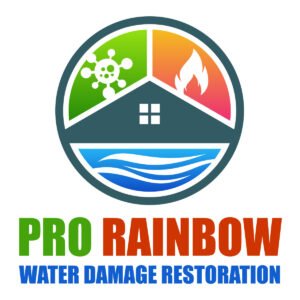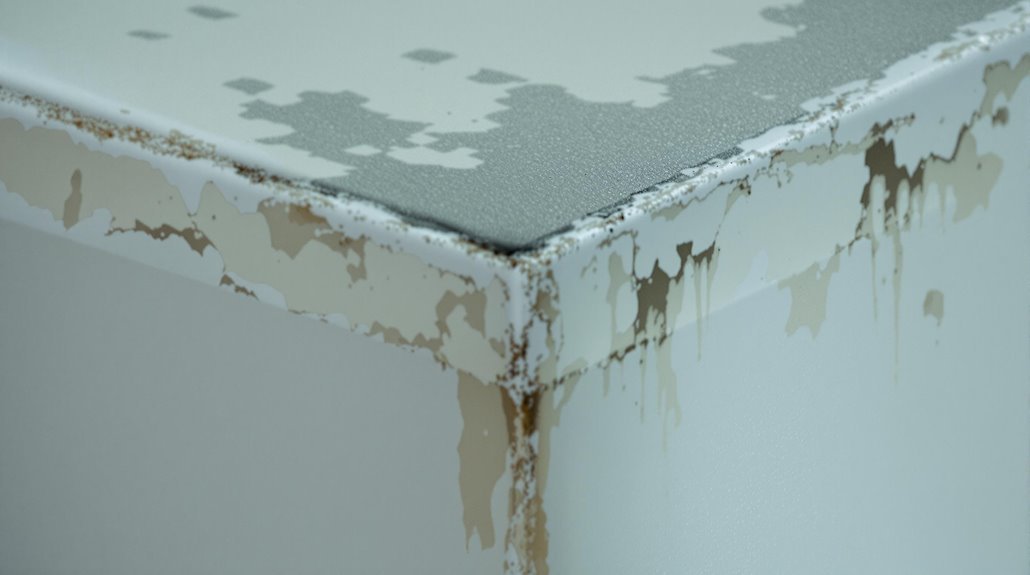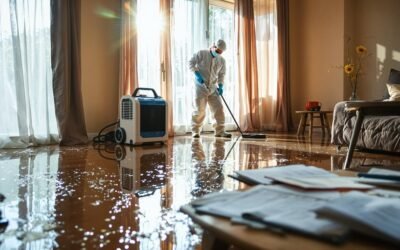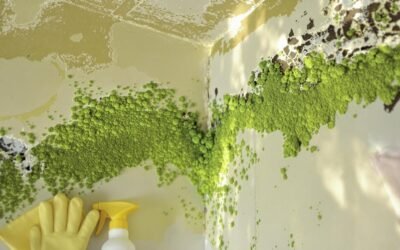Yes, you can have water damage without visible mold. This often happens when moisture accumulates in hidden areas, like behind walls or beneath floors. Signs such as damp surfaces, musty odors, or peeling paint may indicate underlying issues. Increased humidity levels can likewise signal trouble. Prolonged exposure to moisture carries health risks, including respiratory problems and increased mold development, even though it isn't visible initially. Regular inspections and preventive measures can help you catch potential damage early. Understanding these aspects can protect both your health and investment, making it crucial to investigate further insights on this topic.
Key Takeaways
- Yes, water damage can occur without visible mold; moisture can be present in hidden areas, leading to structural issues over time.
- Prolonged moisture exposure can cause health risks, even if mold isn't visible, affecting respiratory health and increasing allergy symptoms.
- Regular inspections are crucial, as hidden water damage may not show signs until it becomes a significant problem, risking structural integrity.
- Water damage can lead to pest infestations, which may occur without visible mold, making vigilance essential for property maintenance.
- Professional assessments can detect hidden moisture levels, ensuring early intervention before minor issues escalate into costly repairs.
Signs of Hidden Water Damage
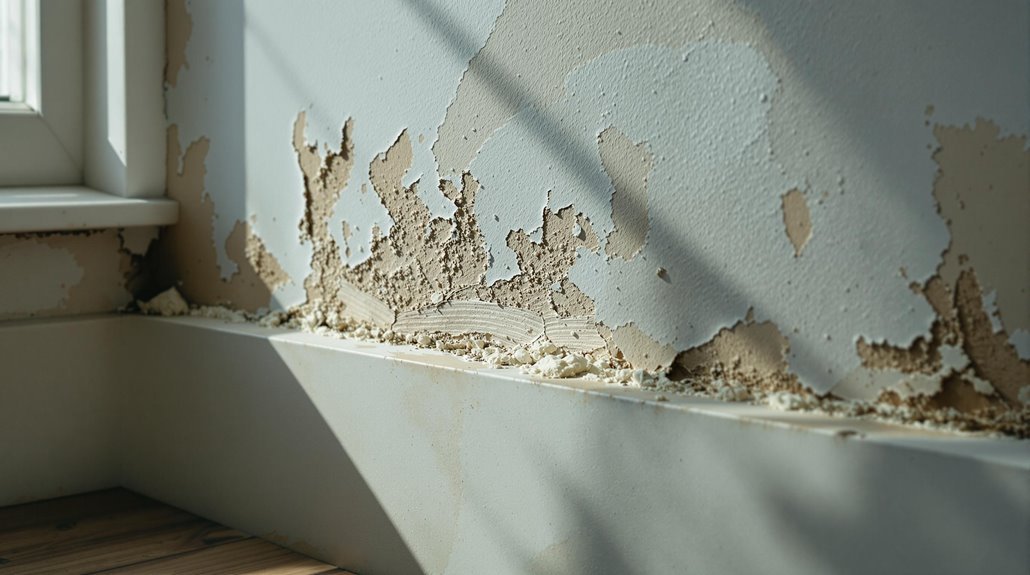
How can you identify hidden water damage before it escalates into a major issue? Start by checking for damp surfaces in areas like basements, under sinks, or behind appliances. These spots often harbor hidden leaks that can lead to significant damage if ignored. You should likewise pay attention to unusual odors; musty smells can indicate moisture accumulation. Inspect walls and ceilings for discoloration or peeling paint, as these may signal underlying water issues. Moreover, keep an eye on your water bill; a sudden increase could suggest leaks. Performing regular inspections can help you spot these signs early, allowing you to address hidden water damage before it becomes a costly problem. Additionally, rapid response is crucial to minimize further damage and the potential for mold growth.
Understanding Moisture Levels
To effectively manage water damage risks, you need to measure humidity levels accurately. Hidden water sources can greatly raise moisture, impacting various materials in your home. Understanding these dynamics helps you take proactive steps to mitigate potential damage. Additionally, professional services can prevent mold growth through thorough drying techniques, ensuring your property remains safe and structurally sound.
Measuring Humidity Levels
Understanding humidity levels is crucial for preventing water damage, but what tools can you use to measure moisture accurately? Effective humidity monitoring is important for maintaining humidity control in your environment. Here are three tools that can help:
- Hygrometer: This device measures the humidity level in your space, providing real-time data on moisture levels.
- Moisture Meter: Ideal for checking the moisture content in materials like wood or drywall, it helps identify potential problem areas.
- Thermo-Hygrometer: Combines temperature and humidity measurements, aiding in understanding the overall climate in your home.
Hidden Water Sources
Even with accurate humidity measurements, hidden water sources can still pose a significant risk for water damage in your home. These hidden leaks often stem from plumbing issues that you might not immediately notice. Water can seep into walls, ceilings, or floors without any visible signs, creating an environment ripe for mold growth and structural damage. You might find yourself unaware of a slow leak behind your toilet or under your sink, which can lead to increased moisture levels over time. Regularly inspecting your plumbing and being alert to unusual water stains or dampness can help you catch these problems early. Addressing hidden water sources promptly is vital to protecting your home from potential damage.
Impact on Materials
Moisture levels can dramatically affect various materials within your home, leading to deterioration and potential structural issues. Understanding how moisture absorption impacts your home's integrity is essential. Here are three key effects of high moisture levels:
- Wood Degradation: Excess moisture can cause wood to swell, warp, and eventually rot, compromising structural stability.
- Drywall Damage: High moisture levels lead to drywall softening, creating conditions for mold growth and material degradation.
- Metal Corrosion: Moisture can initiate rusting processes on metal components, weakening structural supports and fixtures.
Common Causes of Water Damage

While many homeowners may not realize it, various factors can lead to significant water damage within a property. Flood damage, whether from heavy rains or nearby rivers, can quickly overwhelm your home's defenses. Plumbing leaks often go unnoticed until they create larger issues, while roof leaks can result from aging materials or storm damage. Moreover, appliance failures, like a malfunctioning washing machine or dishwasher, can create pools of water that cause further damage. Stormwater intrusion during heavy rains can overwhelm drainage systems, leading to unwanted moisture. Finally, irrigation issues can cause excess water to seep into your foundation. Understanding these common causes is crucial for effective prevention and maintenance, helping you protect your home from unseen water damage.
Health Risks Associated With Moisture
Unattended water damage can lead to serious health risks that often go overlooked. Prolonged exposure to moisture can contribute to various moisture-related illnesses, especially when mold growth is undetected. Here are three key health risks you should be aware of:
- Respiratory Issues: Increased humidity levels can worsen asthma and allergies, leading to chronic coughing and wheezing.
- Infections: Bacteria thrive in damp environments, heightening the risk of respiratory infections and other illnesses.
- Toxic Reactions: Some molds produce mycotoxins that can lead to neurological problems and other serious health issues.
The Role of Humidity
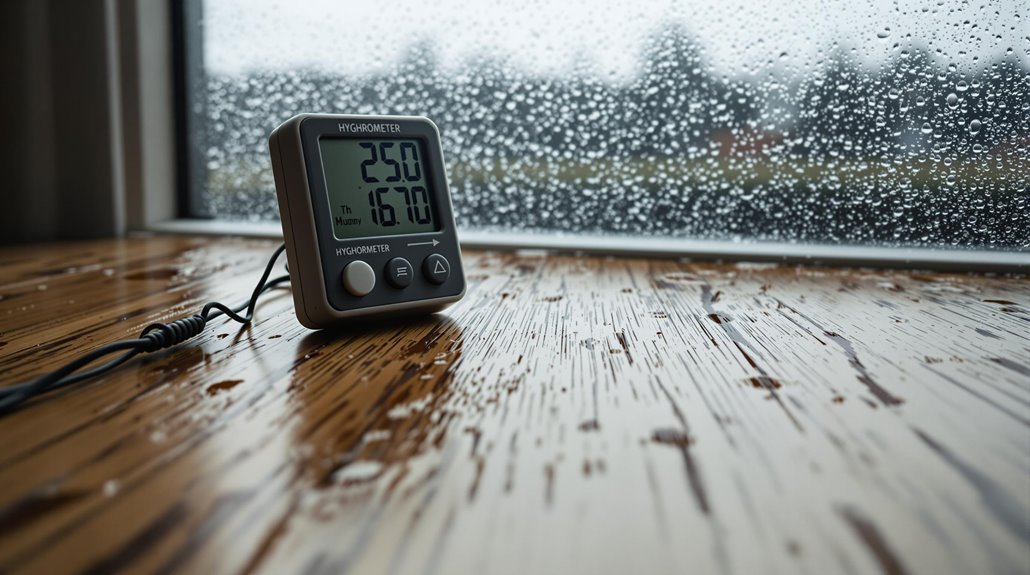
Humidity plays an important role in the dynamics of water damage and its subsequent effects on health and property. High humidity levels can worsen moisture problems, creating an environment where hidden water damage thrives. Without effective humidity control, even minor leaks can lead to significant issues over time. Moisture regulation is vital; it helps prevent the growth of mold and other harmful organisms that can impact your indoor air quality. By maintaining ideal humidity levels, you can protect your property from the unseen consequences of water damage. Consider using dehumidifiers or proper ventilation to manage humidity effectively. Understanding these dynamics empowers you to take proactive steps in safeguarding your home and health from the risks associated with excessive moisture.
Detecting Water Damage Early
Detecting water damage early is vital for minimizing repairs and preventing structural issues. You should watch for signs like discoloration, musty odors, and warped surfaces, as these can indicate hidden moisture problems. Recognizing these indicators promptly can save you time and money, ensuring your space remains safe and structurally sound.
Signs of Water Damage
Water damage can often lurk unnoticed until it becomes a significant problem. Recognizing early signs can help you mitigate risks effectively. Here are three key indicators to watch for:
- Water Stains: Look for discoloration on walls or ceilings, which may indicate moisture buildup.
- Ceiling Leaks: If you notice dripping or sagging ceilings, it's a clear sign of potential water intrusion.
- Musty Odors: A persistent damp smell can suggest hidden moisture issues, even without visible mold.
Importance of Early Detection
Although it may seem minor at first, early detection of water damage is crucial for preventing extensive repairs and health risks. By identifying issues promptly, you can implement proactive measures that save you time and money. Below are some key early detection benefits:
| Early Detection Benefits | Proactive Measures | Long-term Effects |
|---|---|---|
| Reduces repair costs | Regular inspections | Preserves property value |
| Prevents mold growth | Installing dehumidifiers | Avoids health complications |
| Saves time | Immediate fixes | Maintains structural integrity |
| Lowers insurance claims | Monitoring humidity levels | Improves safety |
Addressing water damage early can greatly minimize disruptions in your life and protect your health. Stay vigilant and act quickly!
Preventive Measures to Take

While it may seem easy to overlook, taking proactive steps can greatly reduce the risk of water damage in your home. Implementing effective preventive maintenance and moisture barriers is essential. Here are three key measures to take into account:
- Regular Inspections: Check for leaks in pipes, roofs, and around windows. Catching issues early can prevent larger problems.
- Install Moisture Barriers: Use vapor barriers in crawl spaces and basements to minimize moisture infiltration, protecting your home's structure.
- Maintain Gutters and Downspouts: Verify they're clean and directing water away from your foundation to avoid pooling and potential seepage.
Professional Assessment Importance
After implementing preventive measures, it's wise to contemplate the value of a professional assessment. A professional evaluation is vital for identifying hidden water damage that might not be immediately visible. Even though you've taken steps to mitigate risks, moisture can seep into walls and floors, leading to structural issues or health hazards. Expert consultation can help you uncover potential problems before they escalate. Trained professionals utilize advanced tools to detect moisture levels and assess the extent of damage, providing you with a thorough understanding of your property's condition. This proactive approach not only safeguards your investment but also guarantees a healthier living environment. Don't underestimate the importance of a professional assessment in maintaining your home's integrity.
Long-Term Consequences of Neglect
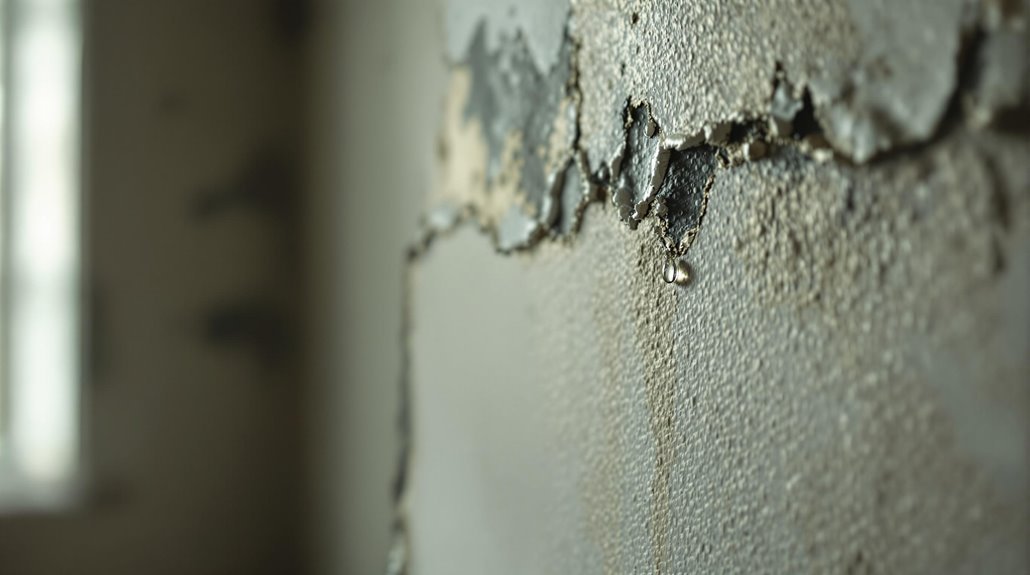
Neglecting water damage can lead to severe long-term consequences that often go unnoticed until significant harm has occurred. You might think the issue is small, but the impacts can be profound, affecting both your home and health. Here are three critical long-term consequences:
- Structural Integrity: Continued moisture can weaken beams and foundations, risking the overall stability of your home.
- Mold Growth: Even without visible mold, hidden moisture can promote mold spores, leading to serious health issues over time.
- Increased Repair Costs: Delaying repairs can exponentially increase expenses, as minor issues evolve into major structural problems.
Understanding these risks emphasizes the importance of addressing water damage promptly to prevent long-term damage and safeguard your property's value.
Conclusion
Ignoring water damage can lead to serious consequences, often without visible mold as a warning sign. You might think everything's fine, but hidden moisture can create health risks and structural issues over time. By staying vigilant and regularly checking for signs of water damage, you can avoid a coincidental disaster down the line. So, take preventive measures now and consider a professional assessment—it's better to be proactive than to face unexpected repercussions later.
